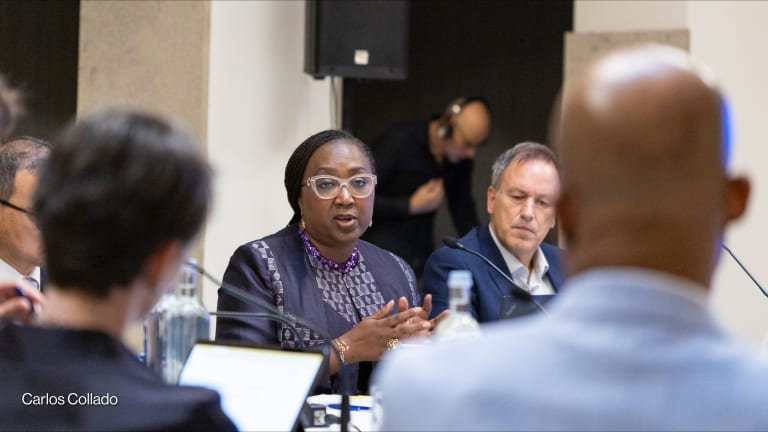With a snap of a camera and a few clicks on a mobile phone, registering children who have been separated from their families during disasters is now simple and quick. Before RapidFTR, the process of helping reunify families ate up so much time and paper.
RapidFTR is an open-source mobile phone application that helps humanitarian workers gather, sift and share information about unaccompanied and separated children in emergency situations. It is just one of the many technologies emerging from UNICEF designed to help its staff, partners and the aid community at large overcome challenges in delivering on their mission.
UNICEF not only prides itself but has also earned recognition for being innovative: In 2011, it was named one of Devex 40 Development Innovators. It runs a global network of innovation labs and has a unit dedicated to working with other agency divisions to come up with new ideas, technologies and products.
To develop RapidFTR, the innovation unit has teamed up with the child protection division. Recently, it launched an initiative in partnership with the emergency operations group, or EMOPS, to identify, test and bring suitable innovations to humanitarian space.
Innovating for better emergency response, though, requires delicate handling. Because of the lifesaving nature of the work, failure is less acceptable for emergency innovations, compared to other sectors.
“You can’t go in there and try a new thing that doesn’t necessarily work without anything backing it up,” Mac Glovinsky, humanitarian innovation lead at UNICEF, told Devex.
As part of the new initiative, the innovation unit and EMOPS convened in October a three-day gathering of UNICEF emergency officers from around the globe. Emergency officers typically have 16-hour days and face constant pressure, so the meeting gave them time, space and freedom to think of creative and different ways to respond better to crises.
“We have a very experienced and technically savvy team of emergency responders … and these emergency people are often very practical solutions-driven,” Glovinsky said.
The New York summit yielded some ideas, including a method that indicates the location of vaccines during transport through radio frequency identification as well as a virtual marketplace that enables beneficiaries to determine relief supplies and services they require the most. Watch the above video to learn more about the Humanitarian Innovators Network Lab.
To be adopted at UNICEF though, any innovation needs to meet certain qualities: It should build on previous experience and must be end user-centric, sustainable, open-source and scalable.
“The challenge is making sure that everything does fit the five principles of innovation [at UNICEF] because sometimes you can get caught up in a cool idea without realizing that it would be totally inappropriate in a local context or it’s focusing on the wrong people, or it’s not equity-driven or it’s not built with the user [in mind], and making sure you have appropriate circumstances with which to deploy especially in a humanitarian context because of the sensitiveness involved in humanitarian contexts,” Glovinsky said.
UNICEF, he added, will soon launch a global challenge for emergency innovations. From the submissions, the agency will choose which solutions to incubate and test for suitability in the field.
Read our previous #innov8aid and let us know what you think about this innovation by leaving a comment below.








